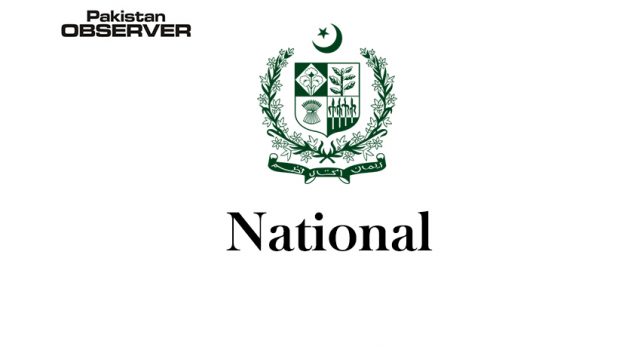Salahuddin Haider
INDIA, since long has been planning and working to dominate its neighbours, big or small like Pakistan, China, Nepal, Bhutan, Tibet etc, but finds itself in the midst of a quagmire now because of its negative mindset. Today, India is a case study for historians, political scientists, and even foras like European Union which has already started to scrutinize its behaviour after the release of EU Disinfo Lab, which completely exposed itself before the civlised world.
From denting repute of secularist country to democratic, from largest democracy to largest extremist country, from human perspectives of Gandhi to brutalities in IIOJK, all have been gained at a very heavy price, India has gone against her own minorities i.e Muslims and Sikhs, world stands bewildered as their favorite against Pakistan has lowered the bar drastically.
Its responseon issues of Babri Masjid, enacting CAA/NRC and farmers protest reflect that Indian society has changed forever for worst.It has also switched old friends and is now considered a strategic ally of United State at the cost of losing Russian trust, something which was not imaginable two decades ago.
Because of the Policies pursued by Nirender Modi and his BJP party, the country has not only won titles of “rape capital of the world”, peace spoiler due to supporting proxies against other states, it has hugely down-graded relations with all of her neighbors. Delhi lost respect and her pride was seriously bruised by Pakistan (27 Feb 2019) and in Laddakh b y China. Even world has serious doubts on actual mil prowess and political will of India against what she projects.
Unfortunately, despite inspite of showing Rafael aircraft and first female fighter pilot on this Republic Day, the substance remains hollow and unreliable. Indian establishment has also issued a threat alert for the Republic Day parade stating that Khalistani outfits and Al-Qaeda are planning attack. Is another false flag of being planned by R&AW? Just to study its long-term desire to be hegemonistic, one should study the desperate attempts from the Himalayan State of Nepal which issued a detailed map for the first time of a disputed area to its far northwest that is controlled by India and touches China. As landlocked country, Nepal for long, long years relied heavily on Pakistan as land route for trade, but fell in India’s lap so much so that its currency was called rupiah. But now it is shedding that load as burden for its integrity.
Kathmandu’s bold move came after Indian Defense Minister Rajnath Singh earlier this month inaugurated by video link a road connecting India to China via Lipulekh in a part of the Himalayan border area known as Kalapani — which both India and Nepal claim as their own. The ancient route has long been used by Indian Hindu pilgrims traveling to the holy area of Kailash Mansarovar in Tibet. New Delhi condemned Nepal’s “unilateral” map issuance, and said “such artificial enlargement of territorial claim” was unacceptable.
Indian Army Chief Manoj Naravane stoked the fire by saying that Nepal’s protest came “at the behest of someone else” — a presumed reference to China. The communist government of Nepal is led by K.P. Sharma Oli, who is considered close to China. Kathmandu has made no secret of its displeasure over the road construction. On May 11, Foreign Minister Pradeep Gyawali summoned Vinay Mohan Kwatra, the Indian ambassador, and handed him a diplomatic note. Ordinary Nepalese, meanwhile, took to the streets in the capital and elsewhere to protest India’s move.
Nepal condemned India’s unilateral act of the newly released map as unacceptable. analysts believe the dispute could flare up into something more serious than contradictory maps at a time when most of the world is distracted by the COVID-19 pandemic. The border row has provided a useful distraction following questions about the government’s inept handling of the pandemic. “There’s no doubt about Oli using this to his advantage,” said Akhilesh Upadhyay, a former chief editor of The Kathmandu Post.
India may also be in need of distractions. “The road inauguration was an attempt of the Modi government to divert India’s attention from [COVID-19] policy failures,” Ashok Swain, an Indian professor at the Department of Peace and Conflict Research at Sweden’s Uppsala University, told the Nikkei Asian Review. Swain said the controversy that followed the road’s inauguration enabled the Modi government to show it was protecting Indian interests against the China-Nepal nexus. “Travel to Kailash Mansarovar further strengthens the regime’s Hindu-nationalism credentials among its supporters,” he said.
An 1816 treaty between Nepal and India, then ruled by the British, defines Nepal’s western borders with India. However, the two countries disagree on the source of the border river. An Indian military outpost, believed to have been installed in the disputed area in 1962, remains a concern for Nepal. In 1981, the two countries formed a joint technical committee to resolve all issues along the 1,880km open and porous border. The committee was dissolved in 2008 after 182 maps had been drawn up to settle most of the issues. The two nations did not reach agreement on Kalapani and Susta in Nepal’s south-central region.
The border dispute comes at a time of tensions and skirmishes between China and India along the border of India’s Ladakh state. The historically prickly relationship between the two great nations is complicated by complex geopolitics and trade relations. Despite their strategic differences, India and China have also been developing business ties and various forms of cooperation.










